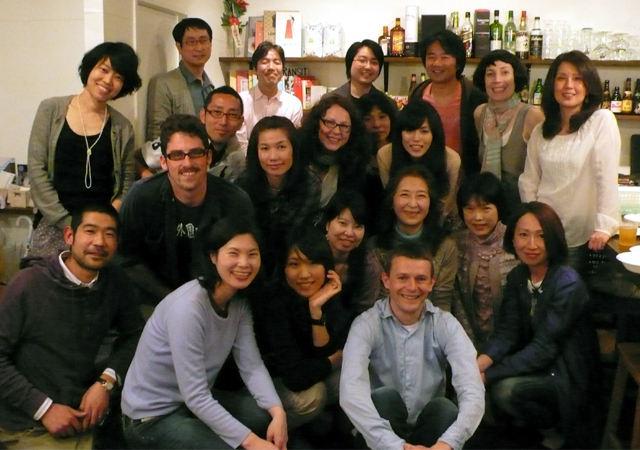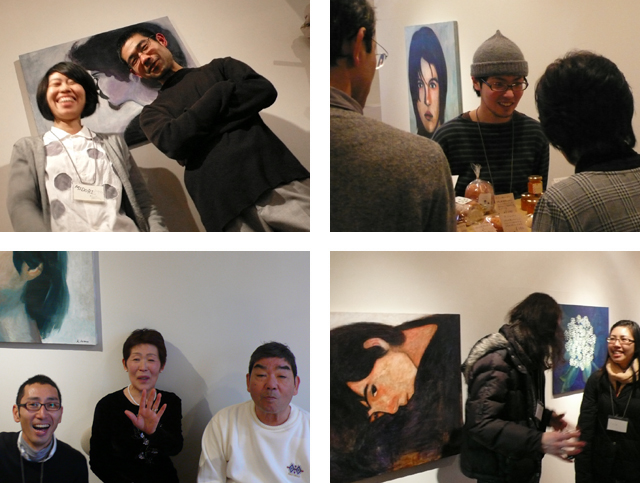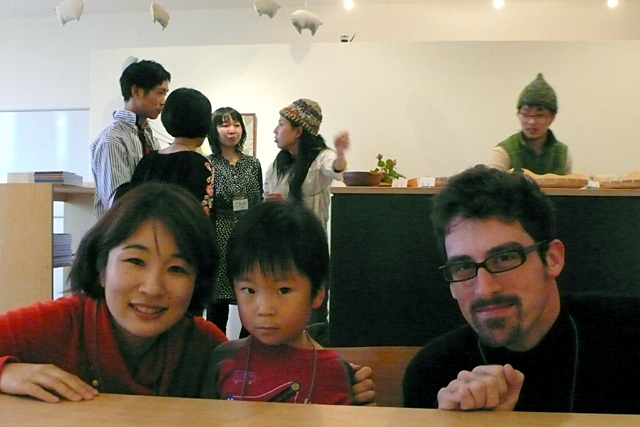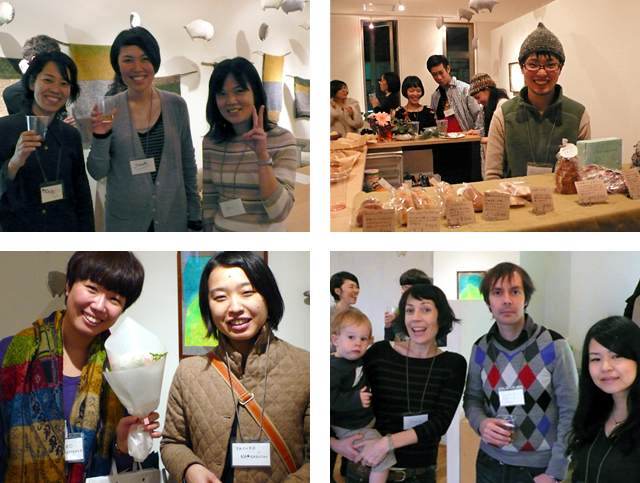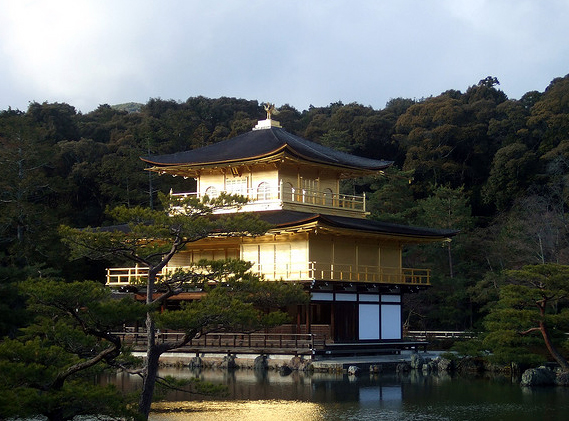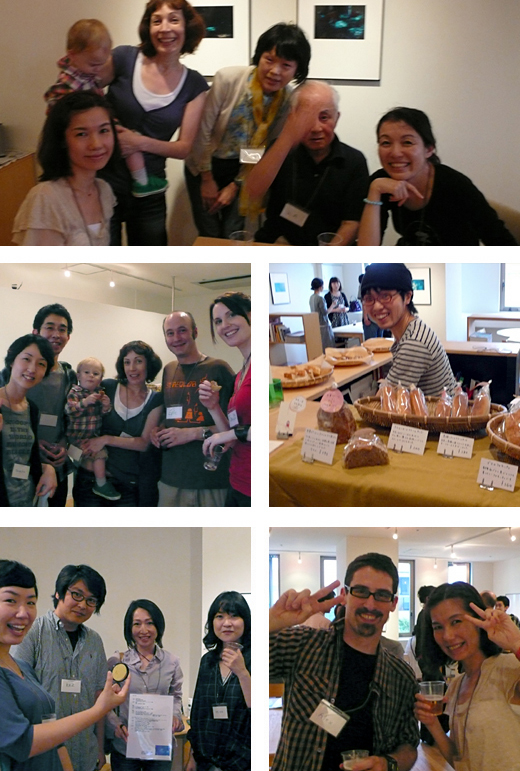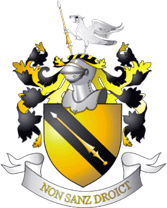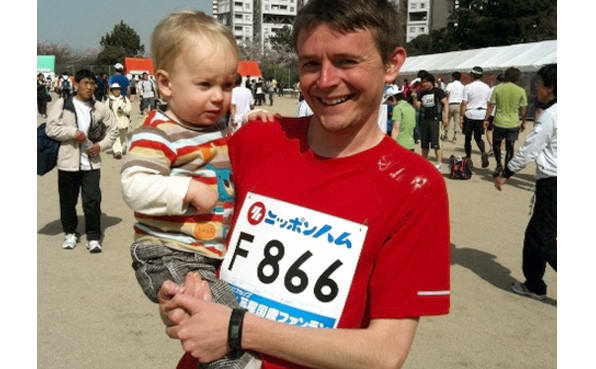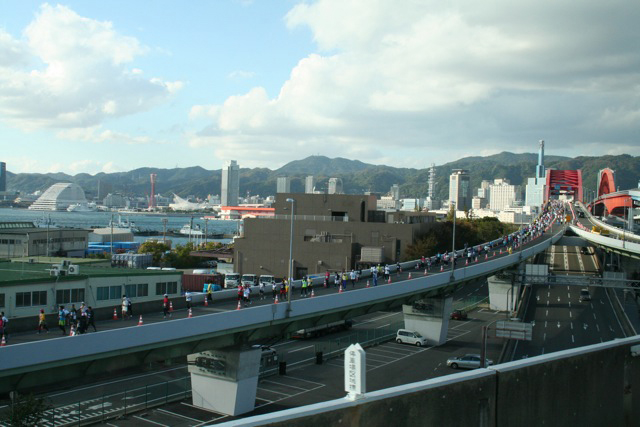
Sunday November 20th 2011 saw Kobe hold its first full marathon. Around twenty thousand people took part in the race, which started on Flower Road, reached as far as the Akashi bridge and made its way back into central Kobe, finally coming to a finish on Port Island. Along the way the runners passed many key landmarks, including Chinatown, Tetsu-jin, Suma beach and Meriken Park.
Despite heavy rain the day before, the weather was perfect: the sun was shining, but it wasn’t too hot, and there was enough of a breeze for the flags on the many boats, which seemed to have come into shore to lend their support, to be clearly visible. The route was mostly flat. In parts it was very narrow, causing congestion for the runners, while other stretches were a lot more open. All along the route there was beautiful scenery and, more importantly, the ceaseless support and encouragement of the people of Kobe. So many came out to cheer, many offering high-fives, drinks and snacks to the weary runners, that it was clearly about more than just a race. This marathon presented them with an opportunity to demonstrate their civic pride, and the people who cheered the runners on with endless shouts of ‘Ganbare!’ and ‘Fight!’ succeeded in showing their city in its best light: passionate and welcoming.
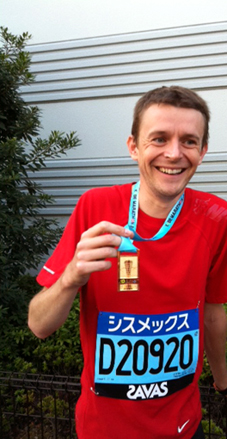 The runners themselves were extremely appreciative of the support they received and did the best they could. Elite athletes led the field and behind them were thousands of others. From the serious runner chasing a personal best, to the fun-runner doing for it for pride or to raise money for charity, everyone had the same objective: get to the finish line!
The runners themselves were extremely appreciative of the support they received and did the best they could. Elite athletes led the field and behind them were thousands of others. From the serious runner chasing a personal best, to the fun-runner doing for it for pride or to raise money for charity, everyone had the same objective: get to the finish line!
One of those runners was me. It was my first full marathon, and I have spent the past few months training and preparing for it. I am used to running by myself – in fact, its solitude is one of the reasons I like running so much – so to suddenly become one of twenty thousand others, all of us going in the same direction and starting at roughly the same time, was an unusual experience for me. The training had been difficult: there were interruptions caused by colds, ear infections and knee injuries. But by the day of the race, I was ready. During the first half of the marathon, as we headed out towards Akashi bridge, I often felt a little frustrated. We were packed so tightly in the narrow lane that there was little chance for me to break out and run at my own pace. The middle stretch, as we came back towards Suma from the bridge, was better and I was able to run at the speed I had been preparing for. At the 30km mark things became much tougher. There was plenty of space now, but I was finding it harder than I had imagined and my knee was starting to give me trouble. There were times after that when I really thought I would have to give up, and I certainly ran a lot slower than I had been planning ? even having to walk at times. However, I am very relieved to say that I managed to get to the finish line in one piece. I completed the marathon in four hours and twenty-four minutes. A little slower than I had hoped, but not too bad, and considering how tough I found the last ten kilometres, I am relieved to have finished at all.
I’m not sure at the moment if I will ever run a full marathon again; one of the things which kept me going towards the end was telling myself that if I finished this time, I would never have to do it again. I will however continue to run whenever I can (and hope to take part in Ashiya’s fun run once more), and I will always remember having taken part in Kobe’s first marathon ? a wonderful experience.
Also, many congratulations to Imagine member Kazu Okuno, who also ran his first full marathon that day. Well done Kazu!

